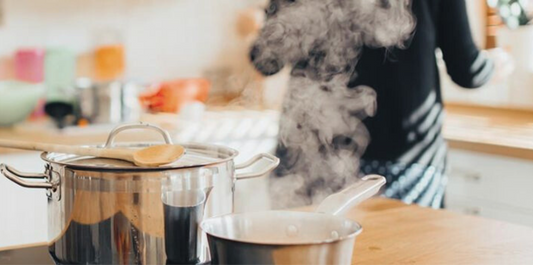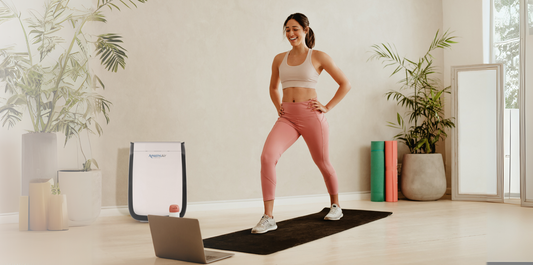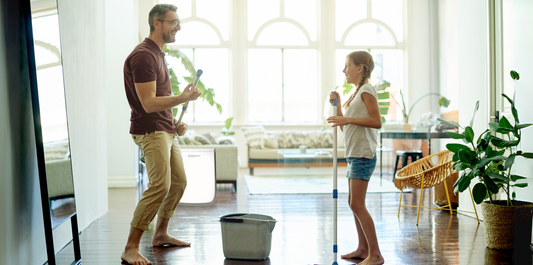As we welcome the first signs of spring, it’s easy to get caught up in the promise of warmer days and lighter evenings. But before opening the windows to let in the fresh air, have you checked your portable air purifier? With the change of season, now is the ideal time to make sure your filters are still doing their job. A quick inspection today could make a big difference to the air quality in your home.
Why spring, and why now?
Spring brings a surge in allergens. Pollen from trees, grasses and flowers fills the air, increasing the number of particles that can impact your health. Although air pollution is often associated with outdoor environments, the air inside homes and workplaces can be just as affected. Smoke, vapours, mould spores and chemical emissions from cleaning products or paint all contribute to poor indoor air quality.

We spend most of our time indoors, and when air quality drops, so too can our health. The rise in indoor pollutants is driven by everything from synthetic home products to limited ventilation. That’s why it’s so important to make sure your purifier’s filter is up to the task.
Over winter, your device has worked hard to trap dust, pet dander and other particles. With spring’s added load of allergens, your filter may already be under strain. This is the right time to check and maintain it—ensuring it continues to protect your indoor environment.
Health risks of neglecting your air purifier's filters
Indoor air quality is a global concern. When filters are not properly maintained, they can allow harmful particles to circulate, increasing the risk of respiratory issues and other health conditions. Both short- and long-term exposure to indoor air pollution has been linked to asthma, cardiovascular disease, cognitive impairment and even cancer. According to the World Health Organization, 3.8 million deaths each year are associated with exposure to indoor air pollution from sources such as dirty cookstoves and fuels.
Certain groups are more vulnerable, including children, older adults, those with existing health conditions and people in lower-income households. Maintaining your device and replacing its filters when necessary supports better indoor air and protects the health of those most at risk.
Maintenance: cleaning versus replacing
Looking after your air purifier’s filters doesn’t always mean replacing them. In many cases, regular cleaning can help extend their life and keep the system running efficiently. Most manufacturers recommend cleaning the pre-filter once a month. This thin, black mesh captures larger particles like hair and dust, preventing build-up in the main filter. A gentle vacuum is often enough to keep it clear and maintain airflow.

HEPA filters, however, typically need to be replaced rather than cleaned. The right replacement schedule depends on usage and air quality.
When should you replace the filters?
Even the best filters lose effectiveness over time. If cleaning isn’t enough to restore airflow or performance, it’s time to consider a replacement. Key factors include:
- Filter type: HEPA filters usually need replacing every 6 to 12 months, while carbon filters may require more frequent changes
- Usage: if your purifier has been running constantly through the winter, it may need new filters sooner
-
Environment: high pollen levels, pollution or the presence of pets can shorten filter life
Quality filters are built to last and handle heavy particle loads while maintaining reliable performance.
What happens if you don’t maintain the filters?
Skipping routine maintenance can affect both your air quality and your purifier’s performance.
1. Reduced filter efficiency
When filters become clogged, airflow is restricted. This forces your device to work harder, consuming more power and reducing its ability to filter effectively.
2. Increased health risks
A dirty filter can allow pollutants such as allergens, dust and other particles to recirculate indoors. Common triggers like dust mites, pet dander and even cockroach debris can lead to flare-ups of asthma or allergies.
How to maintain your filters for best results
1. Inspect regularly
Check your filters every 1–3 months. Even if they appear clean, fine particles may have built up. If the filters look discoloured or clogged, it’s time to replace them.
2. Monitor airflow
Restricted airflow is a sign your filter may be past its best. Reduced airflow not only limits performance but can also shorten your device’s lifespan.
3. Clean or replace accordingly
Some filters are washable, but many HEPA and carbon filters must be replaced to maintain proper filtration. Always follow the manufacturer’s guidance.
4. Choose high-quality filters
Investing in quality filters helps your purifier run more efficiently. They’re designed to last longer and provide reliable performance across all seasons.

Maintaining your portable air purifier this spring doesn’t take much effort—but it makes a big difference. Clean filters support better indoor air quality, lower energy use and consistent device performance.
Before you throw open the windows, make sure your purifier is ready. With regular filter care, you can breathe easier and enjoy a healthier home all season long.





